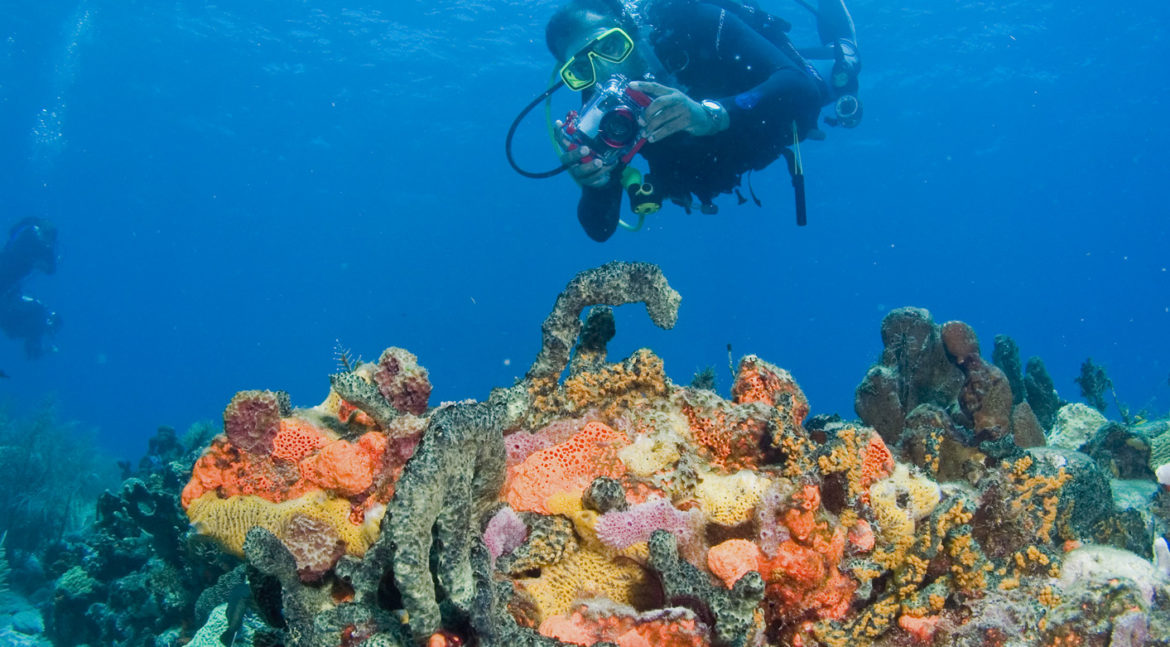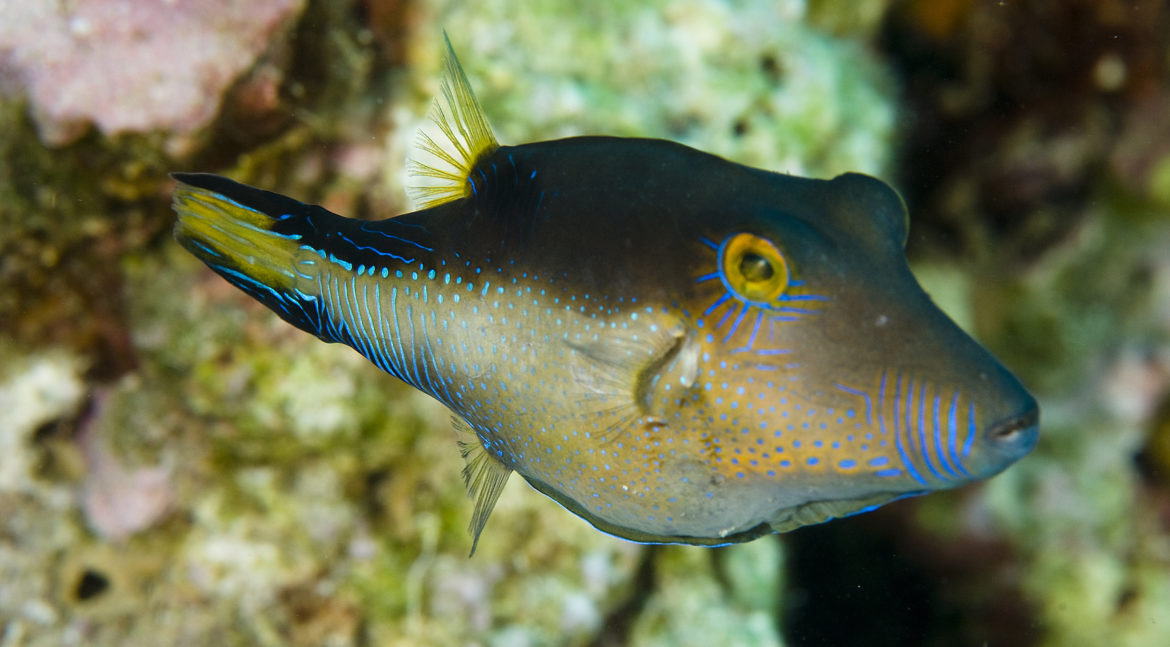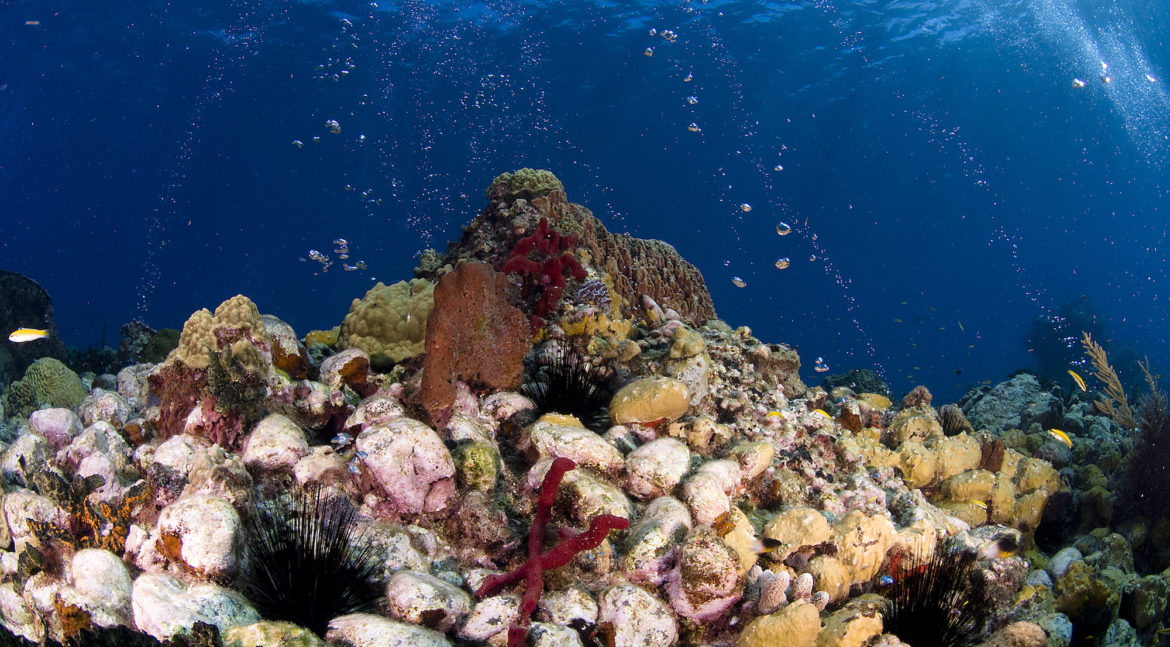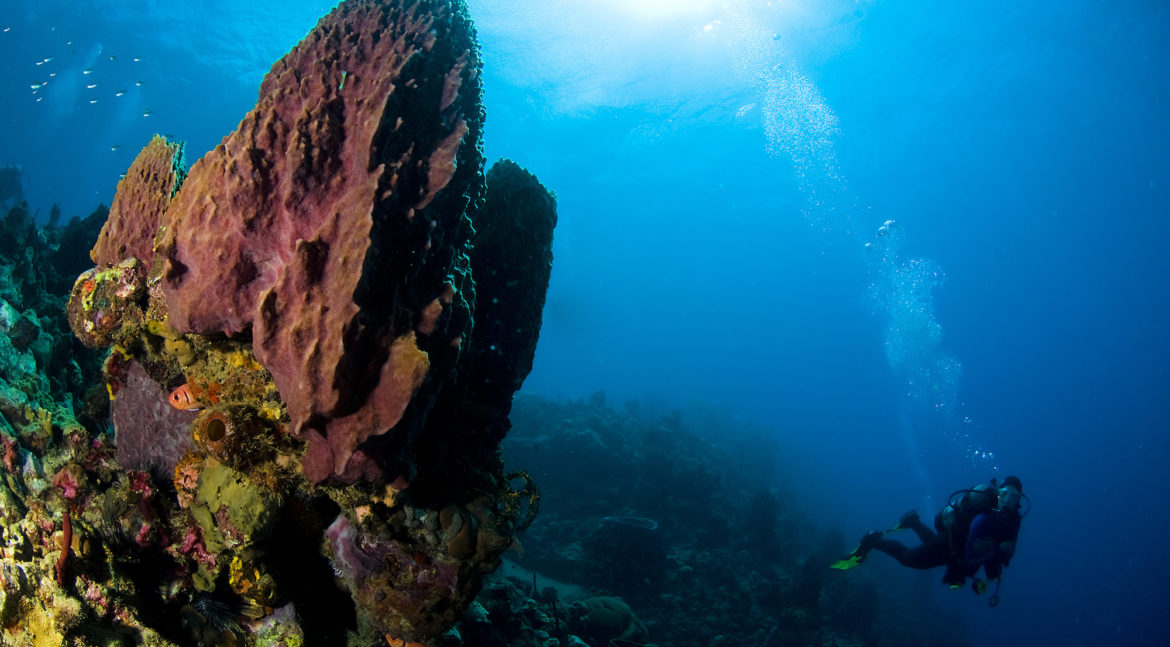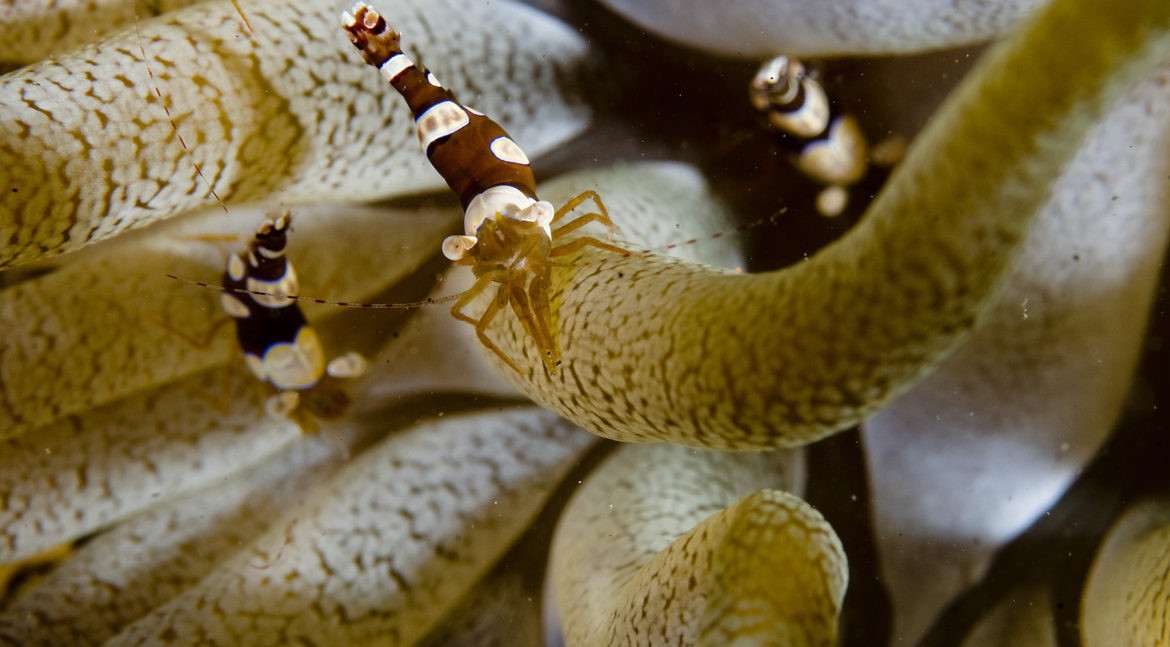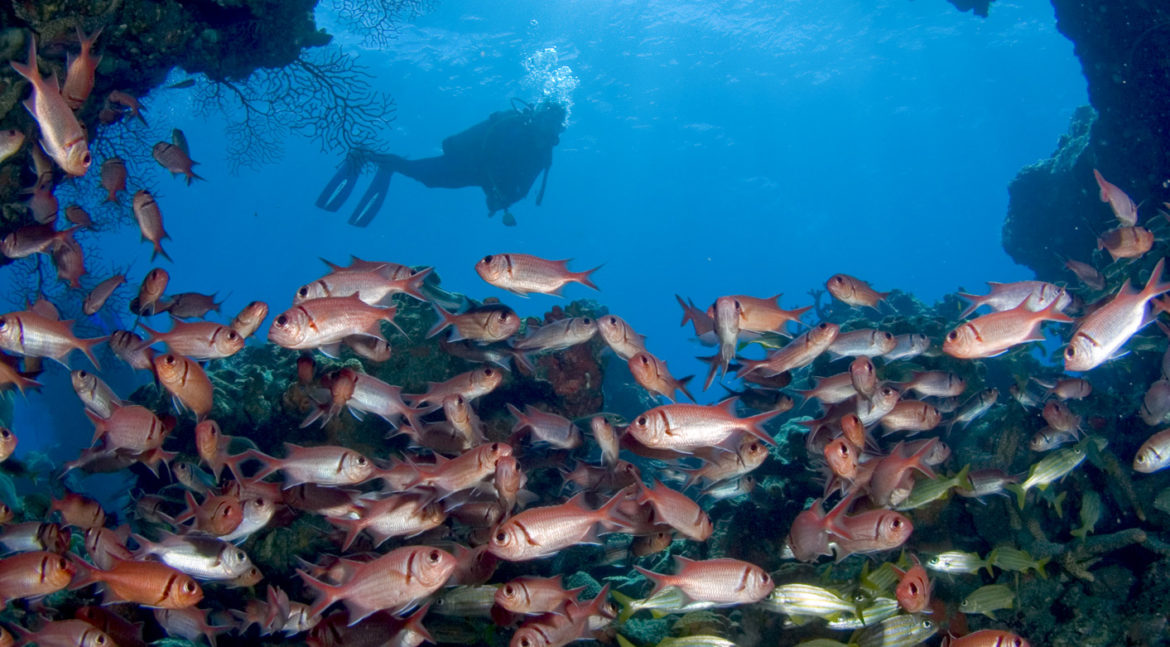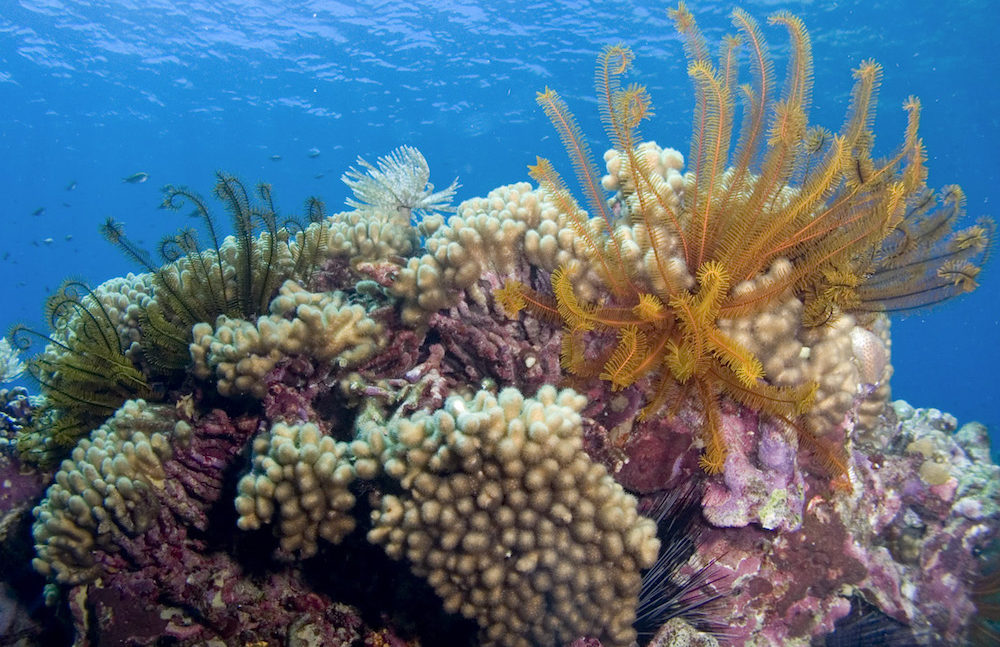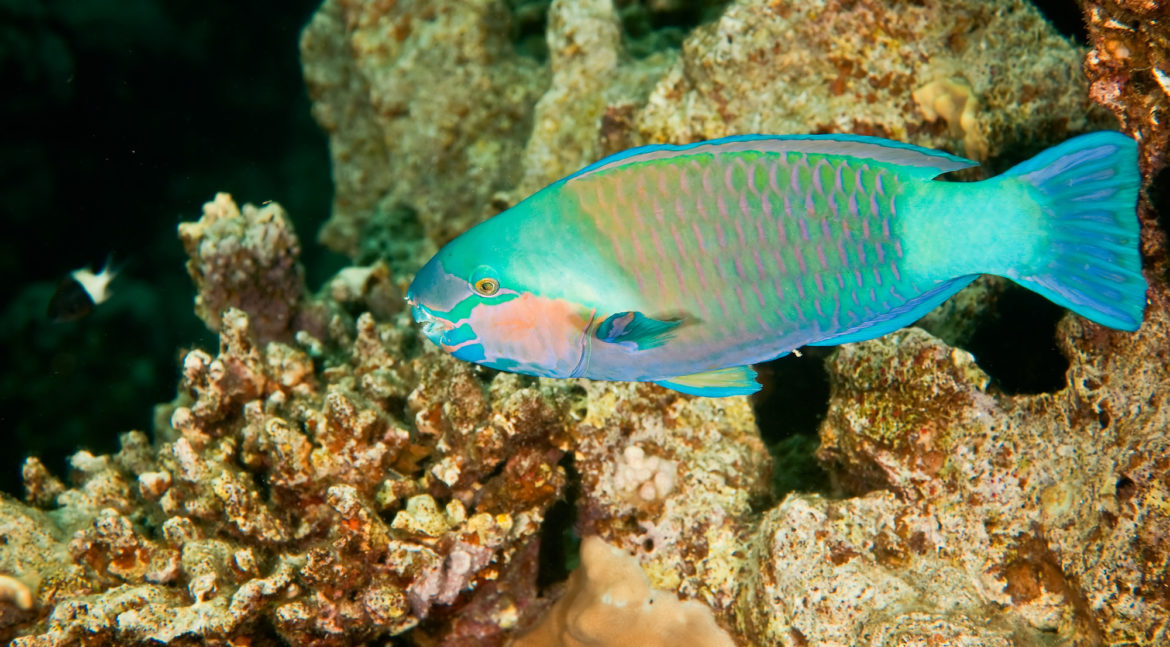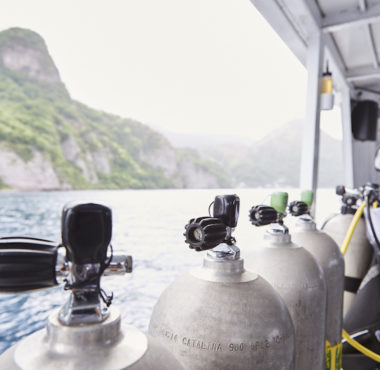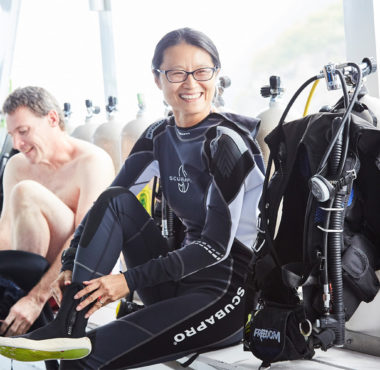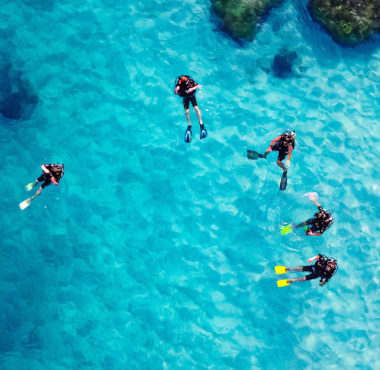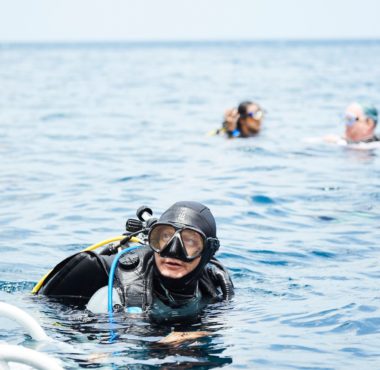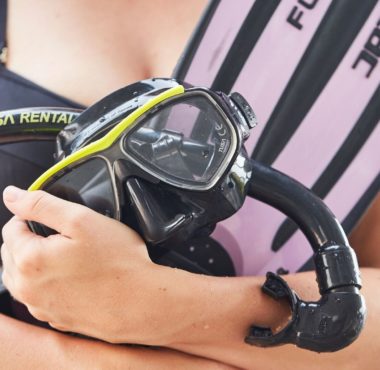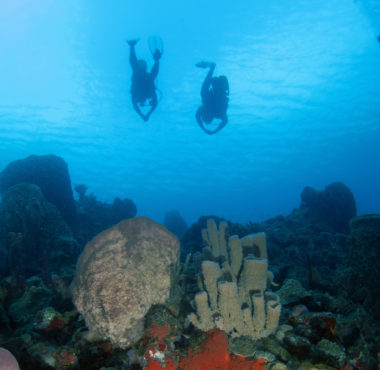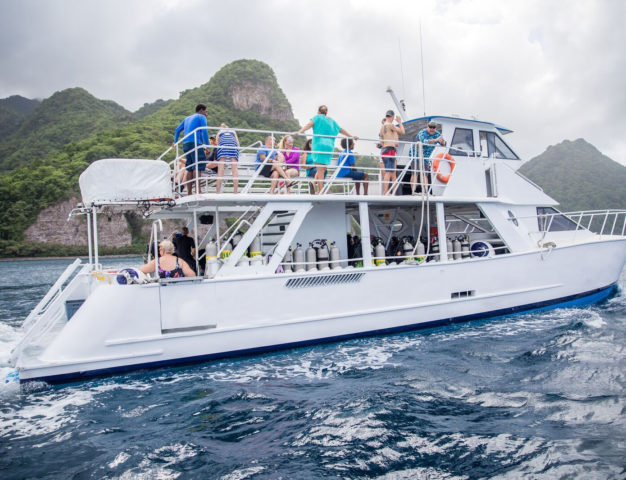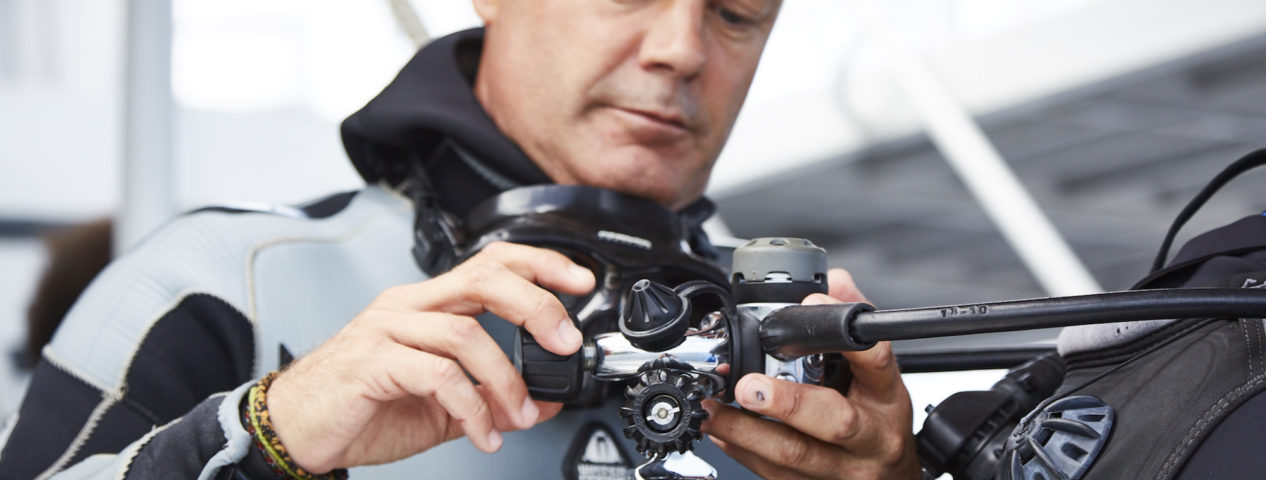The dramatic mountains you can traverse on land across Dominica are mirrored in the topography of our underwater dive sites. Cliff faces plunge into the Caribbean Sea and descend straight down 1500 feet, pinnacles rise up from the surrounding depths almost to the surface and volcanic ridges slope off into the deep blue water.
Our dive sites are teeming with thriving, healthy coral reefs and unique schools of fish, while barracudas, turtles and stingrays frequently swim through dive groups along the reef rim, causing a delightful photographic frenzy. Comprised of gnarled volcanic ledges, crevices and swim-throughs, our reefs are a refuge for a myriad of small critters considered rare in other destinations. Here, seahorses and frogfish are almost guaranteed sightings for divers on a weeklong package. Other rarer critters like batfish, flying gurnards, yellow head jawfish, upside-down jellyfish and flamingo tongue snails can be found if you carefully search the reefs.
With Dominica’s incredibly warm seas and vibrant marine life, along with uncrowded dive sites and an excellent dive staff, Fort Young Dive is amongst the most premier diving operations in the world. Here, it’s our mission to ensure that divers simply can’t wait to come back. Below, get a glimpse of just a handful of diving hotspots you’ll experience with Fort Young Dive:


